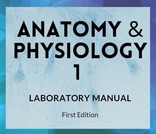
Laboratory manual for undergraduate Anatomy & Physiology 1
- Subject:
- Anatomy/Physiology
- Biology
- Health, Medicine and Nursing
- Material Type:
- Activity/Lab
- Reading
- Teaching/Learning Strategy
- Textbook
- Author:
- Julie Robinson
- Date Added:
- 06/05/2021

Laboratory manual for undergraduate Anatomy & Physiology 1


BCC Bioscience Image Library is a media file repository of images and video clips made available to educators and students in the biological sciences. The resources are created by faculty, staff and students of Berkshire Community College and are licensed under Creative Commons 0. This means all content is free, with no restrictions on how the material may be used, reused, adapted or modified for any purposes, without restriction under copyright or database law.
This project was partially funded by a $20,000,000 grant awarded by the U.S. Department of Labor’s Employment and Training Administration, Grant # TC-26450-14-60-A-25. The product was created by the grantee and does not necessarily reflect the official position of the U.S. Department of Labor. The U.S. Department of Labor makes no guarantees, warranties, or assurances of any kind, express or implied, with respect to such information, including any information on linked sites and including, but not limited to, accuracy of the information or its completeness, timeliness, usefulness, adequacy, continued availability, or ownership.
If you have any questions contact Professor Faye Reynolds at: freynold@berkshirecc.edu
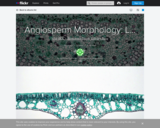
BCC Bioscience Image Library is a media file repository of images and video clips made available to educators and students in the biological sciences. The resources are created by faculty, staff and students of Berkshire Community College and are licensed under Creative Commons 0. This means all content is free, with no restrictions on how the material may be used, reused, adapted or modified for any purposes, without restriction under copyright or database law.
This project was partially funded by a $20,000,000 grant awarded by the U.S. Department of Labor’s Employment and Training Administration, Grant # TC-26450-14-60-A-25. The product was created by the grantee and does not necessarily reflect the official position of the U.S. Department of Labor. The U.S. Department of Labor makes no guarantees, warranties, or assurances of any kind, express or implied, with respect to such information, including any information on linked sites and including, but not limited to, accuracy of the information or its completeness, timeliness, usefulness, adequacy, continued availability, or ownership.
If you have any questions contact professor Faye Reynolds at: freynold@berkshirecc.edu
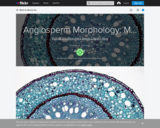
BCC Bioscience Image Library is a media file repository of images and video clips made available to educators and students in the biological sciences. The resources are created by faculty, staff and students of Berkshire Community College and are licensed under Creative Commons 0. This means all content is free, with no restrictions on how the material may be used, reused, adapted or modified for any purposes, without restriction under copyright or database law.
This project was partially funded by a $20,000,000 grant awarded by the U.S. Department of Labor’s Employment and Training Administration, Grant # TC-26450-14-60-A-25. The product was created by the grantee and does not necessarily reflect the official position of the U.S. Department of Labor. The U.S. Department of Labor makes no guarantees, warranties, or assurances of any kind, express or implied, with respect to such information, including any information on linked sites and including, but not limited to, accuracy of the information or its completeness, timeliness, usefulness, adequacy, continued availability, or ownership.
If you have any questions contact Professor Faye Reynolds at: freynold@berkshirecc.edu
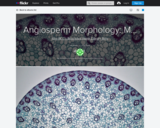
BCC Bioscience Image Library is a media file repository of images and video clips made available to educators and students in the biological sciences. The resources are created by faculty, staff and students of Berkshire Community College and are licensed under Creative Commons 0. This means all content is free, with no restrictions on how the material may be used, reused, adapted or modified for any purposes, without restriction under copyright or database law.
This project was partially funded by a $20,000,000 grant awarded by the U.S. Department of Labor’s Employment and Training Administration, Grant # TC-26450-14-60-A-25. The product was created by the grantee and does not necessarily reflect the official position of the U.S. Department of Labor. The U.S. Department of Labor makes no guarantees, warranties, or assurances of any kind, express or implied, with respect to such information, including any information on linked sites and including, but not limited to, accuracy of the information or its completeness, timeliness, usefulness, adequacy, continued availability, or ownership.
If you have any questions contact professor Faye Reynolds at: freynold@berkshirecc.edu
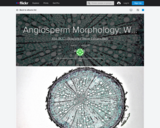
BCC Bioscience Image Library is a media file repository of images and video clips made available to educators and students in the biological sciences. The resources are created by faculty, staff and students of Berkshire Community College and are licensed under Creative Commons 0. This means all content is free, with no restrictions on how the material may be used, reused, adapted or modified for any purposes, without restriction under copyright or database law.
This project was partially funded by a $20,000,000 grant awarded by the U.S. Department of Labor’s Employment and Training Administration, Grant # TC-26450-14-60-A-25. The product was created by the grantee and does not necessarily reflect the official position of the U.S. Department of Labor. The U.S. Department of Labor makes no guarantees, warranties, or assurances of any kind, express or implied, with respect to such information, including any information on linked sites and including, but not limited to, accuracy of the information or its completeness, timeliness, usefulness, adequacy, continued availability, or ownership.
If you have any questions contact professor Faye Reynolds at: freynold@berkshirecc.edu
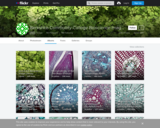
BCC Bioscience Image Library is a media file repository of images and video clips made available to educators and students in the biological sciences. The resources are created by faculty, staff and students of Berkshire Community College and are licensed under Creative Commons 0. This means all content is free, with no restrictions on how the material may be used, reused, adapted or modified for any purposes, without restriction under copyright or database law.
This project was partially funded by a $20,000,000 grant awarded by the U.S. Department of Labor’s Employment and Training Administration, Grant # TC-26450-14-60-A-25. The product was created by the grantee and does not necessarily reflect the official position of the U.S. Department of Labor. The U.S. Department of Labor makes no guarantees, warranties, or assurances of any kind, express or implied, with respect to such information, including any information on linked sites and including, but not limited to, accuracy of the information or its completeness, timeliness, usefulness, adequacy, continued availability, or ownership.
If you have any questions contact professor Faye Reynolds at: freynold@berkshirecc.edu
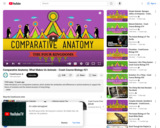
Hank introduces us to comparative anatomy, which studies the similarities and differences in animal anatomy to support the theory of evolution and the shared ancestry of living things.
Chapters:
1) Comparative Anatomy
2) Locomotion
3) Heterotophy
4) Convergent Evolution
5) Biolography
6) Tissues
a) Epithelial Tissue
b) Connective Tissue
c) Muscle Tissue
d) Nerve Tissue
7) Organs
8) Organ Systems
Review

This is a learning "adventure" (i.e. interactive learning) for body tissues created for an Anatomy & Physiology 1 course. It can be modified for different concepts and is suitable for use in lecture, lab, or outside of class time as an independent assignment.
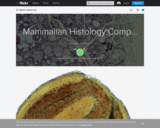
BCC Bioscience Image Library is a media file repository of images and video clips made available to educators and students in the biological sciences. The resources are created by faculty, staff and students of Berkshire Community College and are licensed under Creative Commons 0. This means all content is free, with no restrictions on how the material may be used, reused, adapted or modified for any purposes, without restriction under copyright or database law.
This project was partially funded by a $20,000,000 grant awarded by the U.S. Department of Labor’s Employment and Training Administration, Grant # TC-26450-14-60-A-25. The product was created by the grantee and does not necessarily reflect the official position of the U.S. Department of Labor. The U.S. Department of Labor makes no guarantees, warranties, or assurances of any kind, express or implied, with respect to such information, including any information on linked sites and including, but not limited to, accuracy of the information or its completeness, timeliness, usefulness, adequacy, continued availability, or ownership.
If you have any questions contact professor Faye Reynolds at: freynold@berkshirecc.edu

In this subject, we consider two basic topics in cellular biophysics, posed here as questions:
Which molecules are transported across cellular membranes, and what are the mechanisms of transport? How do cells maintain their compositions, volume, and membrane potential?
How are potentials generated across the membranes of cells? What do these potentials do?
Although the questions posed are fundamentally biological questions, the methods for answering these questions are inherently multidisciplinary. As we will see throughout the course, the role of mathematical models is to express concepts precisely enough that precise conclusions can be drawn. In connection with all the topics covered, we will consider both theory and experiment. For the student, the educational value of examining the interplay between theory and experiment transcends the value of the specific knowledge gained in the subject matter.
This course is jointly offered through four departments, available to both undergraduates and graduates.
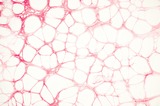
Tissues are groups of cells working together. A specific tissue has similar cells which perform a particular function. In this activity we will look at various types of tissue to see how structure is related to function. You will be researching several different types of tissues. For each tissue you will include a description/picture/drawing, list at least one function and list at least one place it is found in the human body. You may use the following charts, or you may record your information in another format of your own design (google slides, etc.). You may use the internet or resource books to help you find the information.

Tissues are groups of cells working together. A specific tissue has similar cells which perform a particular function. In this activity we will look at various types of tissue to see how structure is related to function. You will be researching several different types of tissues. For each tissue you will include a description/picture/drawing, list at least one function and list at least one place it is found in the human body. You may use the following charts, or you may record your information in another format of your own design (google slides, etc.). You may use the internet or resource books to help you find the information.agri